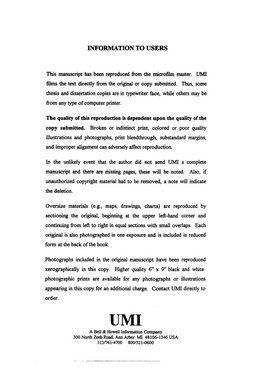| dc.contributor.advisor | Suflita, Joseph M., | en_US |
| dc.contributor.author | Londry, Kathleen Louise. | en_US |
| dc.date.accessioned | 2013-08-16T12:29:32Z | |
| dc.date.available | 2013-08-16T12:29:32Z | |
| dc.date.issued | 1997 | en_US |
| dc.identifier.uri | https://hdl.handle.net/11244/5435 | |
| dc.description.abstract | The toxicity and biodegradation of mixtures of thiols, thiophenes, thiophenic acids and aromatic sulfides were determined under anaerobic conditions. Toxicity effects were dependent on the structure of the organosulfur compounds, the amounts added to cultures, and the available electron acceptor. The anaerobic biodegradation of eight different organothiols was observed under nitrate-reducing conditions but not methanogenic or sulfate-reducing conditions. Degradation of hexanethiol was linked to nitrate reduction and nitrite production. | en_US |
| dc.description.abstract | For biodegradation studies, enrichment cultures were established with target compounds added singly or as mixtures, often in a hydrophobic carrier. The degradation of compounds such as n-alkanes, n-alkanols, and n-alkcanoic acids depended on chemical structure as well as redox potential. n-alkanoic acids were degraded faster than n-alkanols, whereas n-alkanes were not metabolized. The susceptibility of n-alkanols and n-alkanoic acids to degradation was chain-length dependent. Alkanols were transformed to the corresponding alkanoic acids, and the formation of esters as a minor fate process was also noted. | en_US |
| dc.description.abstract | The anaerobic degradation of a variety of aromatic compounds was investigated with the sulfate-reducing bacterium Desulfotomaculum strain Groll. Initial steps of metabolic pathways for the degradation of m- and p-cresol were proposed. Degradation of both isomers proceeded by hydroxylation of the methyl groups to yield hydroxybenzyl alcohols which were further oxidized to hydroxybenzoic acids then metabolized as benzoyl-coenzyme A thioesters. These proposed pathways were supported by substrate degradation profiles, detection of metabolites, and biochemical studies. Although strain Groll degraded these cresol isomers by similar reactions, the enzymes catalyzing the oxidation of the meta and para isomers were biochemically distinct. | en_US |
| dc.description.abstract | A variety of compounds associated with petroleum and petroleum-derived wastes were examined for their susceptibility to biodegradation under methanogenic, sulfate-reducing, and nitrate-reducing conditions. Inocula from chronically contaminated environments were used to explore the limits of anaerobic degradation potential. In addition, an ecological approach to the prevention of sulfide emissions was evaluated. Nitrate was added to oily sludge incubations to test its efficacy in preventing sulfidogenesis by sulfate-reducing bacteria. Nitrate inhibited sulfate reduction in a concentration-dependent manner, and reduced sulfide concentrations under a variety of salinity conditions. | en_US |
| dc.format.extent | xviii, 174 leaves : | en_US |
| dc.subject | Anaerobic bacteria. | en_US |
| dc.subject | Environmental Sciences. | en_US |
| dc.subject | Aromatic compounds Biodegradation. | en_US |
| dc.subject | Biology, Microbiology. | en_US |
| dc.title | The anaerobic biodegradation of petroleum-related compounds. | en_US |
| dc.type | Thesis | en_US |
| dc.thesis.degree | Ph.D. | en_US |
| dc.thesis.degreeDiscipline | Department of Microbiology and Plant Biology | en_US |
| dc.note | Adviser: Joseph M. Suflita. | en_US |
| dc.note | Source: Dissertation Abstracts International, Volume: 58-02, Section: B, page: 0526. | en_US |
| ou.identifier | (UMI)AAI9721055 | en_US |
| ou.group | College of Arts and Sciences::Department of Microbiology and Plant Biology | |
